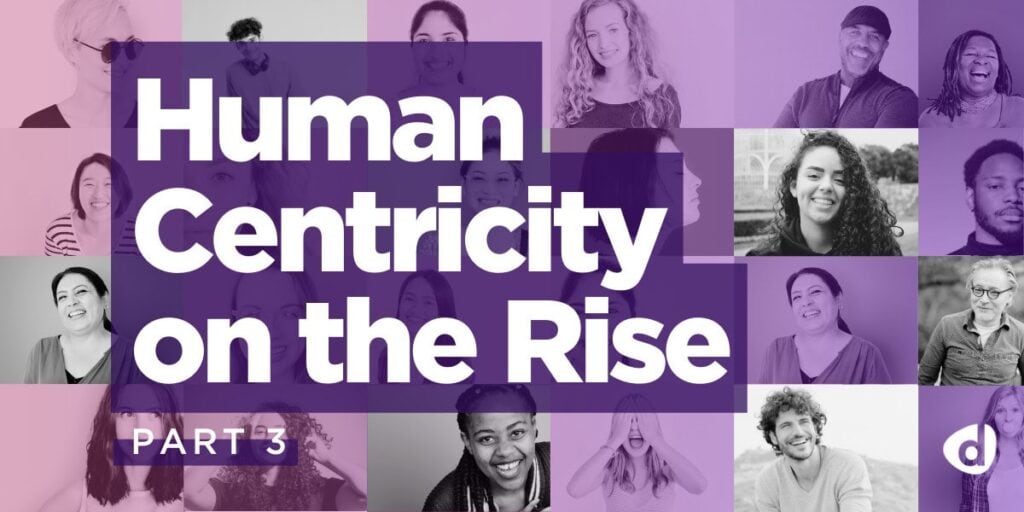Mastering a Consumer-Centric Approach for Business Growth

When was the last time you felt truly heard by a company? Not just as another sale or a statistic, but as a person whose needs genuinely mattered. A consumer centric approach is a necessary shift in how successful companies operate.
Customers today expect more than good service; they want to be understood, valued, and prioritized at every touchpoint. Businesses that fail to adapt risk falling behind, while those that embrace a consumer centric approach unlock deeper customer relationships and better outcomes.
If your business isn’t centering its strategy around the consumer, you’re missing out on growth opportunities. Read on to discover how adopting this mindset can enhance every part of your operations; from the products you develop to the marketing tactics you deploy. With the right steps, a consumer centric approach can completely transform how you engage with your audience and ultimately drive long-term success.
What is Consumer Centricity?
At its core, a consumer centric strategy focuses on putting the customer first by making their needs, preferences, and experiences the primary drivers of business decisions.
Unlike traditional business models that prioritize product development or profit margins, a consumer centric approach starts by asking, “What does the customer want or need?” This mindset shift is essential in today’s business environment, where customer expectations have evolved significantly.
Modern consumers demand more than just a product or service. They want to feel valued and understood. The rise of social media and instant feedback channels has amplified the need for companies to be more empathetic and responsive.
Consumers expect companies to understand their needs and expectations. Failing to meet these expectations can result in losing customer trust, which is difficult to rebuild.
The difference between a consumer centric and traditional model is stark. In traditional models, companies dictate the terms and offerings. In contrast, a consumer centric approach continuously adapts based on feedback and strategic consumer insights.
It’s no longer enough to assume what the customer wants. Companies must actively listen and evolve to maintain relevance and foster loyalty.
Why Consumer Centricity is Key to Business Growth
The benefits of adopting customer-centric strategies are clear. First and foremost, companies that focus on consumer needs see a significant boost in customer satisfaction. When customers feel understood, they are more likely to return, recommend the brand to others, and even pay a premium for services that cater to their preferences.
Research from Deloitte shows that customer-centric companies are 60% more profitable than those that do not focus on their customers.
Beyond profitability, consumer centric strategies lead to increased loyalty. Customers are more likely to stick with a brand they feel personally connected to. In industries where customer churn is high, this can make a significant difference.
A key advantage of being consumer centric is the ability to anticipate market trends and consumer behavior shifts. For instance, Starbucks has long used its loyalty app to gather feedback and track purchasing trends, which helps the company launch new products and promotions tailored to customer preferences.
By constantly engaging with customers and making data-driven decisions, companies can stay ahead of the curve. However, many businesses fall into the trap of assuming they know what the customer wants without actively seeking their input. This leads to misguided product launches or marketing campaigns that miss the mark.
Steps to Implement a Consumer-Centric Strategy
To truly adopt a consumer centric strategy, businesses must first learn to listen to their customers. This starts with gathering insights through multiple channels, including :
- Surveys
- Interviews
- Real-time feedback platforms
Modern tools allow businesses to scale these efforts more efficiently and make it easier to capture relevant feedback. Qualitative research platforms like Discuss enable organizations to conduct live and asynchronous activities by providing valuable insights that guide decision-making.
Once businesses gather feedback, the next step is acting on it. Too often, companies collect customer data but fail to implement changes based on the insights they gain. This is a critical mistake.
Successful companies not only listen to customers but also make tangible changes that reflect customer needs. Whether it’s tweaking a product design or adjusting consumer-focused marketing campaigns, businesses must be agile and responsive.
Technology plays a significant role in streamlining consumer centric efforts. AI tools and mobile user experience testing have revolutionized how businesses interact with their audiences.
AI tools, such as those embedded in customer engagement tactics, can help automate tasks like:
- Sorting feedback
- Identifying patterns
- Generating insights
For instance, AI-driven platforms can quickly analyze vast amounts of customer data to identify emerging trends or common pain points. Mobile UX testing helps businesses gain real-time feedback on how users interact with apps or websites, leading to more seamless digital experiences.
Challenges of Adopting a Consumer Centric Approach
Despite the clear benefits, many companies struggle to adopt a fully consumer centric approach.
The challenges companies face fall into four primary categories: speed, complexity, cost, and usability. Each of these areas poses significant barriers to collecting actionable insights quickly and efficiently, ultimately impacting a company’s ability to stay attuned to consumer needs.
- Speed & Agility: Traditional qualitative research methods are too slow, requiring weeks or even months to complete due to lengthy recruitment, scheduling, and manual analysis processes. This lag time disconnects businesses from current consumer desires and market shifts, creating a competitive disadvantage. By the time insights are available, they may already be outdated, making it difficult to keep pace with evolving market trends.
- Process Complexity: Many organizations rely on a fragmented approach, using multiple tools and platforms for various aspects of research, such as focus groups, video storage, and respondent tracking. This disjointed setup scatters insights across different systems, creating silos and complicating collaboration across teams. The added burden of administrative tasks like purchase orders (POs) and statements of work (SOWs) for each project only exacerbates the complexity, making the process feel cumbersome and discouraging frequent use.
- Cost Implications: The expense of qualitative research can quickly escalate, especially with pay-per-project or pay-per-session models. This high cost often leads companies to limit the frequency of consumer interactions to stay within budget. Fewer interactions mean fewer insights, restricting the organization’s ability to remain responsive to consumer preferences and behaviors.
- Perceived Difficulty of Research: The challenges of time, cost, and complexity combine to make qualitative research feel hard and inaccessible for many teams. Without a streamlined, user-friendly way to conduct consumer research, teams may avoid it altogether, relying instead on transactional data that lacks the depth of qualitative insights. This creates a gap between strategic consumer-centric goals and the actual implementation of regular consumer engagement.
To overcome these issues, a company must shift to a holistic, integrated approach that combines all research functions into one accessible platform.
By adopting modern tools that offer an “easy button” for qualitative research—enabling streamlined, unlimited research capabilities—companies can conduct more frequent and insightful consumer conversations.
The key is moving away from fragmented methods and embracing unified solutions that facilitate collaboration, encourage real-time insights, and support cost-effective, ongoing consumer engagement.
Drive Growth with Consumer Centric Insights
Adopting a consumer centric approach not only strengthens customer relationships but also drives measurable business outcomes. By focusing on customer needs and using strategic insights, businesses can enhance customer engagement, boost satisfaction, and outpace competitors.
Discuss empowers organizations with cutting-edge market insights tools to help global organizations stay close to their consumers. Unlike traditional platforms, Discuss enables you to seamlessly capture the voice of your customer in real-time and speed the time to insights with innovative tools and GenAI capabilities. Book a demo today and see how Discuss can revolutionize your approach.
Ready to unlock human-centric market insights?
Related Articles

Why Your Business Needs a Multicultural Marketing Strategy
A recent Ad Age article highlights a notable trend that some companies are taking a stand to keep DEI at…
A recent Ad Age article highlights a notable trend that some companies are taking a stand to keep DEI at…

Human Centricity on the Rise: Navigating the New Era, Part 3
How to unlock human centricity at scale with a key mindset shift In Part 1 of this blog series, I…
How to unlock human centricity at scale with a key mindset shift In Part 1 of this blog series, I…

3 Ways to Design for Empathy & Human Centricity
By Adam Mertz, Chief Growth Officer at Discuss Introduction I recently had the opportunity to moderate a compelling discussion between…
By Adam Mertz, Chief Growth Officer at Discuss Introduction I recently had the opportunity to moderate a compelling discussion between…



